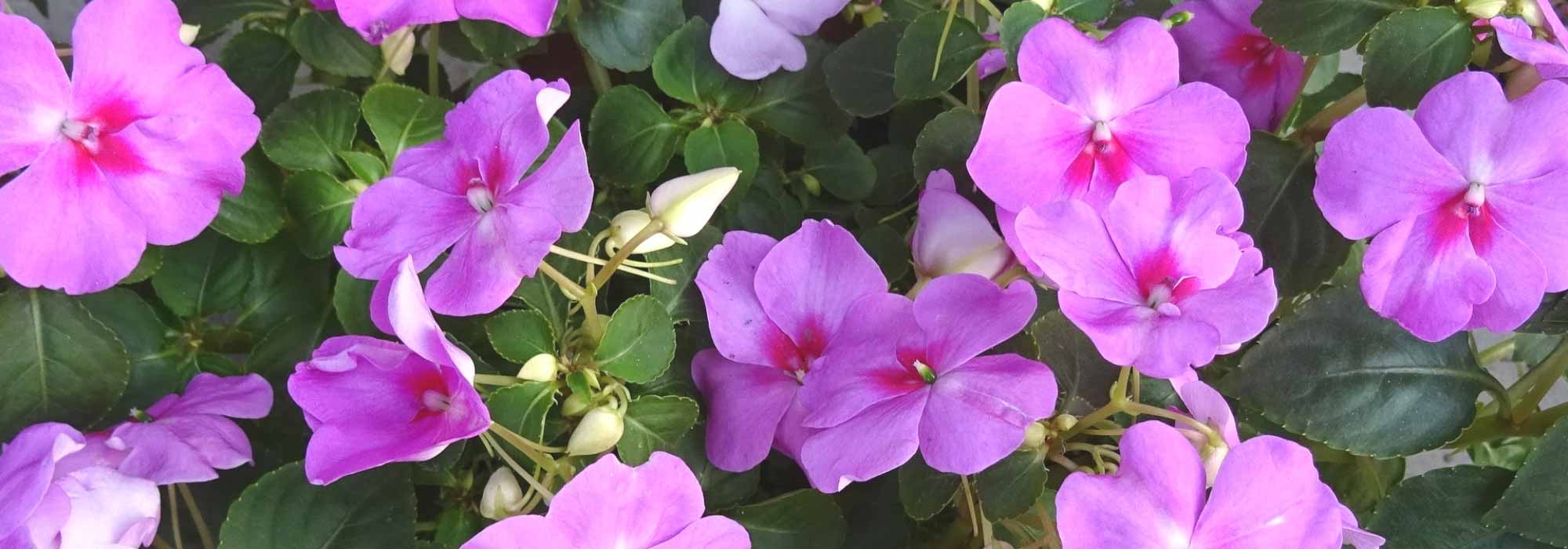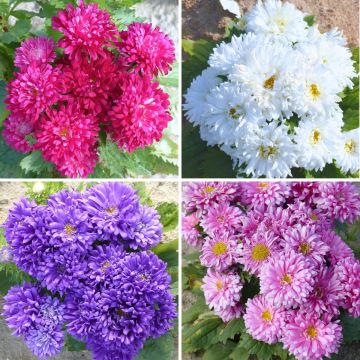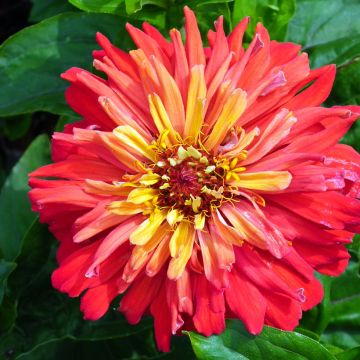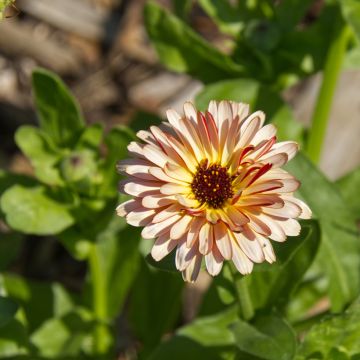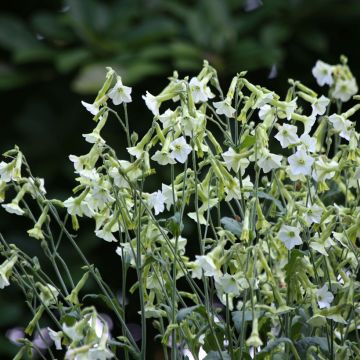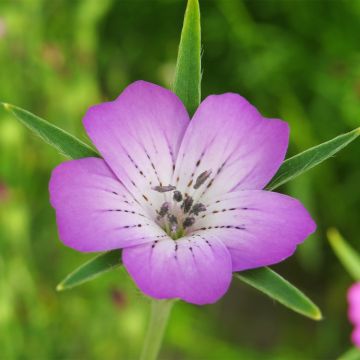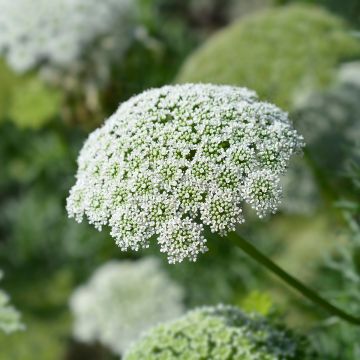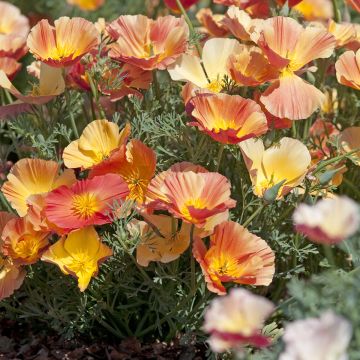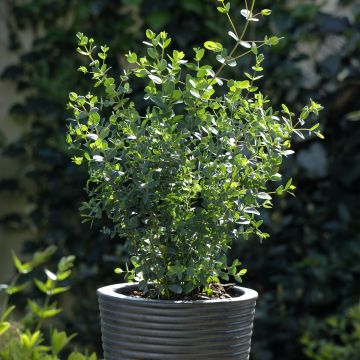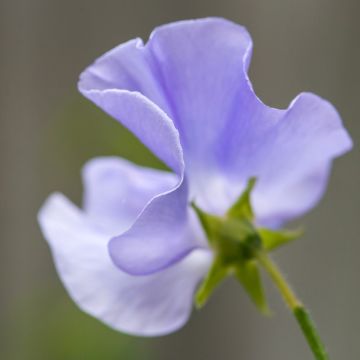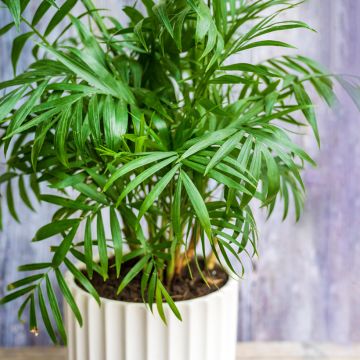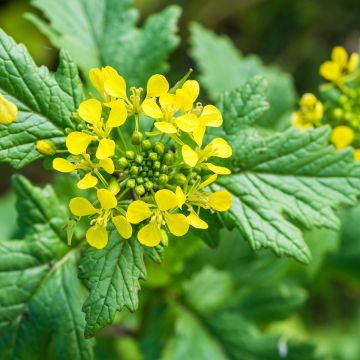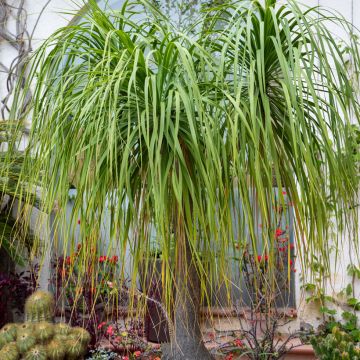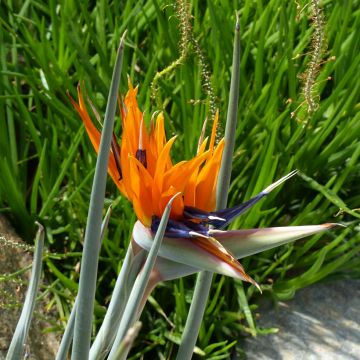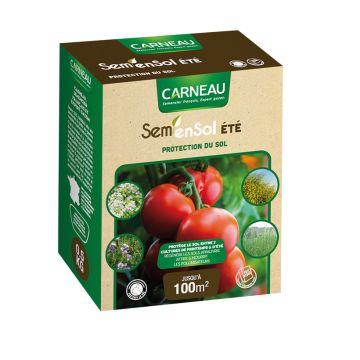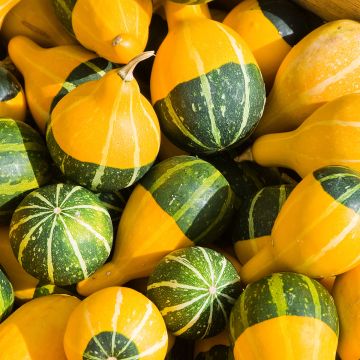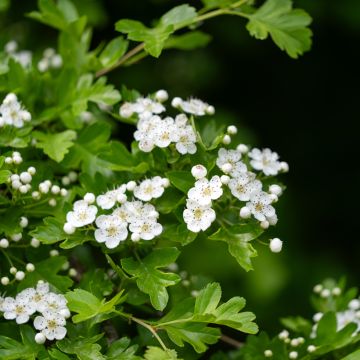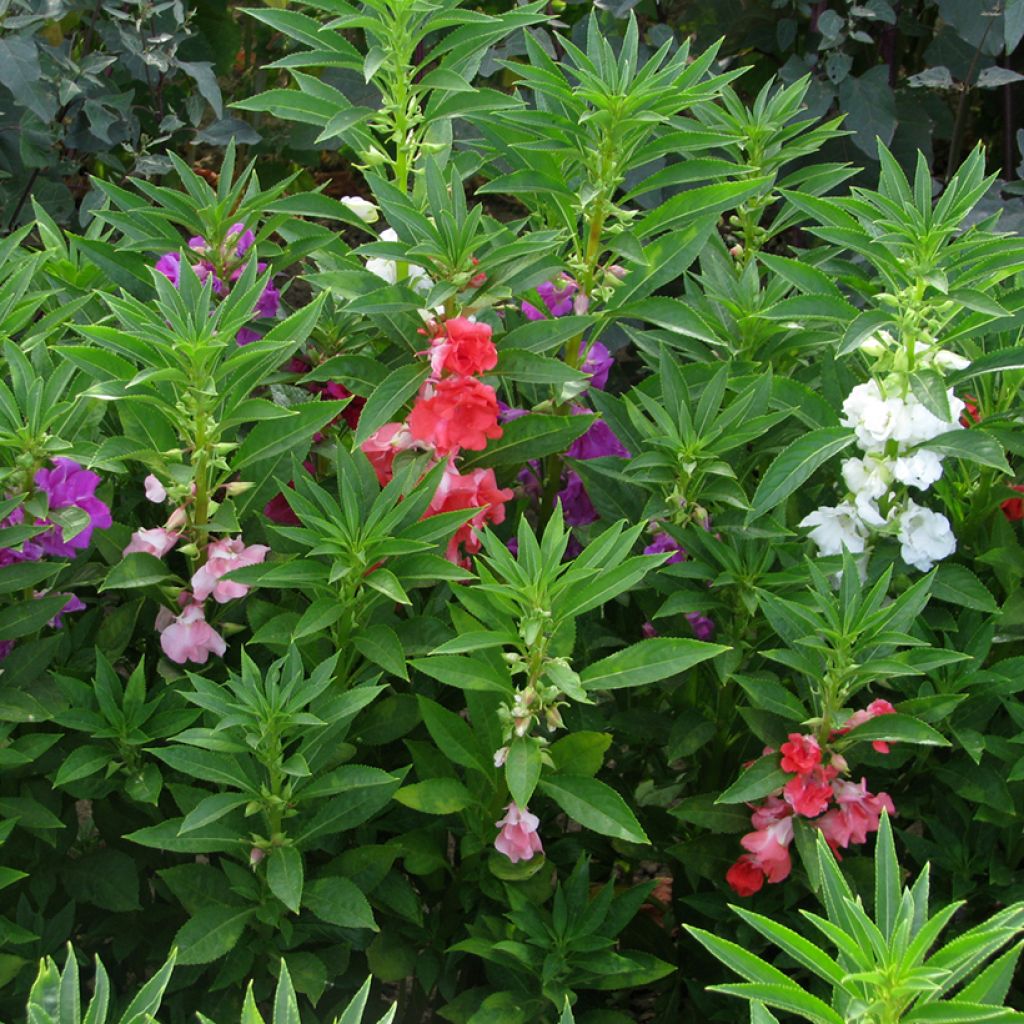

Impatiens balsamina Camellia-flowered Mix - seeds
Impatiens balsamina Camellia-flowered Mix - seeds
Impatiens balsamina A flores de Camelia Mix
Garden Balsam, Rose Balsam, Touch-me-not
Special offer!
Receive a €20 voucher for any order over €90 (excluding delivery costs, credit notes, and plastic-free options)!
1- Add your favorite plants to your cart.
2- Once you have reached €90, confirm your order (you can even choose the delivery date!).
3- As soon as your order is shipped, you will receive an email containing your voucher code, valid for 3 months (90 days).
Your voucher is unique and can only be used once, for any order with a minimum value of €20, excluding delivery costs.
Can be combined with other current offers, non-divisible and non-refundable.
Home or relay delivery (depending on size and destination)
Schedule delivery date,
and select date in basket
This plant carries a 6 months recovery warranty
More information
We guarantee the quality of our plants for a full growing cycle, and will replace at our expense any plant that fails to recover under normal climatic and planting conditions.

Would this plant suit my garden?
Set up your Plantfit profile →
Description
Impatiens balsamina 'Camellia-flowered Mix' offers a prolonged and intense flowering, with pretty double flowers ranging from white to violet, with a variety of shades of pink and red. These are low-maintenance, annual plants known for their ease of cultivation. Sheltered from the harsh rays of the sun, their exuberant summer flowering adds brightness and charm to borders, flower beds and flower pots. Double balsams also make excellent cut flowers. Sow from March to May, either under cover or directly in open ground, allowing for blooms from mid-June.
Impatiens balsamina, also known as Camellia-flowered Balsam or Double Balsam, belongs to the balsaminaceae family. It is native to India and Myanmar, where it naturally grows in wet and slightly shaded areas of tropical regions. Balsam, an old-fashioned relative of garden impatiens, was introduced to Europe in the 16th century via the Silk Road, becoming a popular ornamental flower, especially in Victorian gardens. Cultivated as an annual plant, it blooms generously in summer until early autumn, offering a range of colours. Beyond its ornamental aspect, balsam, traditionally used as a balm, hence its name "balsamina," has been used in indigenous medicine in Asia to relieve rheumatism, fractures, and various inflammations.
The 'Camellia-flowered Mix' balsams have a bright green, slightly serrated foliage, carried by brittle, sap-filled stems. Adopting a bushy and minimally branched silhouette, they can reach a height of 50 to 70 cm. From June to September, the flowers appear in the axils of the leaves in the form of pompoms measuring 5 to 7 cm in diameter, resembling camellia flowers. Elegant and graceful, they display a range of colours ranging from pure white to violet, with a complete range of pink shades. Throughout the summer, these nectar-rich flowers attract pollinators, butterflies, and birds, thus enriching the ecosystem of your garden.
Camellia-flowered Balsams thrive in rich, moist soil in areas semi-shaded during the hottest hours of the day. With their vibrant hues, they are essential for brightening up shaded scenes in summer. In a natural or romantic garden, they easily blend with masterworts, Japanese anemones, and fuchsias. In a woodland setting, they enhance a carpet of heucheras and hostas, or ferns. In containers on a shaded terrace, they harmonise well with other annual plants such as coleus, begonias, or morning glories.
Tips: To maintain adequate moisture and preserve soil moisture, it is useful to apply mulch at the base of the plants.
Flowering
Foliage
Plant habit
Botanical data
Impatiens
balsamina
A flores de Camelia Mix
Balsaminaceae
Garden Balsam, Rose Balsam, Touch-me-not
Cultivar or hybrid
Other Flower seeds A to Z
View all →Planting and care
The seeds of Camellia-flowered Balsam are quite large: about 100 per gram. For sowing, two methods are possible:
Sowing under shelter, before transplanting and planting in open ground: Sow from March to May, at a depth of 5 or 8 mm, in a fine potting soil and cover the seeds with a very thin pinch of vermiculite. Place the seed tray in a propagator at a temperature of 18-25°C, or wrap it in a polythene bag. Keep the soil moist, but not waterlogged. Light promotes germination, which occurs 8 to 12 days after sowing. When the seedlings are large enough to handle, transplant them into individual pots with a diameter of 7 cm. Grow them in cooler conditions until the plants are sufficiently developed to be planted outdoors. When all risk of frost has passed, gradually acclimatise the plants to outdoor conditions for 7 to 10 days. Plant them in partially shaded open ground, in moist, well-drained soil, spaced 20 to 30 cm apart. Pinch the tips of the shoots on each stem during transplantation to encourage branching and the production of numerous flowers.
Direct sowing in open ground: Easier to do, sow in May, after the last frost. Sow the seeds, spaced apart, in soil that has already been prepared, covering them with approximately 5 to 8 mm of a light substrate. Germination takes approximately 8 to 12 days. Once the young seedlings reach the stage of 3 to 5 leaves, thin them out to leave one plant every 20 to 30 cm.
Camellia-flowered Balsam thrives in acidic to neutral, moist, fertile, well-drained and well-tilled soil, in a sheltered location away from the scorching sun, ideally in a shaded area. Flowering occurs from June, approximately 2 months after sowing, and lasts until September. To intensify flowering, simply prune the faded stems.
Balsam grown in pots or containers requires regular watering during periods of intense heat. Being sensitive to heat, it is normal to see them wilt in hot weather, watering will revitalize them. To maintain their vitality, make sure to feed them regularly every two to three weeks throughout the flowering season with a balanced water-soluble feed.
Sowing period
Intended location
Planting & care advice
This item has not been reviewed yet - be the first to leave a review about it.
Similar products
Haven't found what you were looking for?
Hardiness is the lowest winter temperature a plant can endure without suffering serious damage or even dying. However, hardiness is affected by location (a sheltered area, such as a patio), protection (winter cover) and soil type (hardiness is improved by well-drained soil).

Photo Sharing Terms & Conditions
In order to encourage gardeners to interact and share their experiences, Promesse de fleurs offers various media enabling content to be uploaded onto its Site - in particular via the ‘Photo sharing’ module.
The User agrees to refrain from:
- Posting any content that is illegal, prejudicial, insulting, racist, inciteful to hatred, revisionist, contrary to public decency, that infringes on privacy or on the privacy rights of third parties, in particular the publicity rights of persons and goods, intellectual property rights, or the right to privacy.
- Submitting content on behalf of a third party;
- Impersonate the identity of a third party and/or publish any personal information about a third party;
In general, the User undertakes to refrain from any unethical behaviour.
All Content (in particular text, comments, files, images, photos, videos, creative works, etc.), which may be subject to property or intellectual property rights, image or other private rights, shall remain the property of the User, subject to the limited rights granted by the terms of the licence granted by Promesse de fleurs as stated below. Users are at liberty to publish or not to publish such Content on the Site, notably via the ‘Photo Sharing’ facility, and accept that this Content shall be made public and freely accessible, notably on the Internet.
Users further acknowledge, undertake to have ,and guarantee that they hold all necessary rights and permissions to publish such material on the Site, in particular with regard to the legislation in force pertaining to any privacy, property, intellectual property, image, or contractual rights, or rights of any other nature. By publishing such Content on the Site, Users acknowledge accepting full liability as publishers of the Content within the meaning of the law, and grant Promesse de fleurs, free of charge, an inclusive, worldwide licence for the said Content for the entire duration of its publication, including all reproduction, representation, up/downloading, displaying, performing, transmission, and storage rights.
Users also grant permission for their name to be linked to the Content and accept that this link may not always be made available.
By engaging in posting material, Users consent to their Content becoming automatically accessible on the Internet, in particular on other sites and/or blogs and/or web pages of the Promesse de fleurs site, including in particular social pages and the Promesse de fleurs catalogue.
Users may secure the removal of entrusted content free of charge by issuing a simple request via our contact form.
The flowering period indicated on our website applies to countries and regions located in USDA zone 8 (France, the United Kingdom, Ireland, the Netherlands, etc.)
It will vary according to where you live:
- In zones 9 to 10 (Italy, Spain, Greece, etc.), flowering will occur about 2 to 4 weeks earlier.
- In zones 6 to 7 (Germany, Poland, Slovenia, and lower mountainous regions), flowering will be delayed by 2 to 3 weeks.
- In zone 5 (Central Europe, Scandinavia), blooming will be delayed by 3 to 5 weeks.
In temperate climates, pruning of spring-flowering shrubs (forsythia, spireas, etc.) should be done just after flowering.
Pruning of summer-flowering shrubs (Indian Lilac, Perovskia, etc.) can be done in winter or spring.
In cold regions as well as with frost-sensitive plants, avoid pruning too early when severe frosts may still occur.
The planting period indicated on our website applies to countries and regions located in USDA zone 8 (France, United Kingdom, Ireland, Netherlands).
It will vary according to where you live:
- In Mediterranean zones (Marseille, Madrid, Milan, etc.), autumn and winter are the best planting periods.
- In continental zones (Strasbourg, Munich, Vienna, etc.), delay planting by 2 to 3 weeks in spring and bring it forward by 2 to 4 weeks in autumn.
- In mountainous regions (the Alps, Pyrenees, Carpathians, etc.), it is best to plant in late spring (May-June) or late summer (August-September).
The harvesting period indicated on our website applies to countries and regions in USDA zone 8 (France, England, Ireland, the Netherlands).
In colder areas (Scandinavia, Poland, Austria...) fruit and vegetable harvests are likely to be delayed by 3-4 weeks.
In warmer areas (Italy, Spain, Greece, etc.), harvesting will probably take place earlier, depending on weather conditions.
The sowing periods indicated on our website apply to countries and regions within USDA Zone 8 (France, UK, Ireland, Netherlands).
In colder areas (Scandinavia, Poland, Austria...), delay any outdoor sowing by 3-4 weeks, or sow under glass.
In warmer climes (Italy, Spain, Greece, etc.), bring outdoor sowing forward by a few weeks.






























